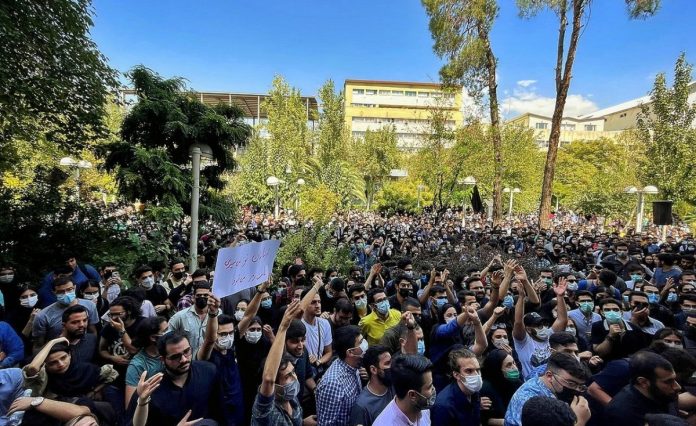Protests have continued and escalated in Iran as the movement sparked by the death of Mahsa Amini entered a fourth week in defiance of a bloody crackdown. On 8 October, workers went on strike and schoolgirls marched following the deaths of other protesters. One banner said: “We are not afraid anymore. We will fight.”
Videos have spread on social media of brave young women inside and outside schools and universities swinging their headscarves around their heads, chanting, and confronting officials, including the president when he visited a university in Tehran. Protesters have also been calling for the end of the regime. Many students have been arrested, sitting in prison cells while police officers and soldiers patrol schools and universities!
The youth have been joined by workers, including some which have been involved in the series of struggles since 2017-18 on economic and social issues. Teachers, bus drivers, truck drivers and oil workers have all taken strike action and appeals ae being made for others to join in. A call for a 48 hour general strike could bring the opposition together and show in practice the regime’s isolation.
The protest movement has shown again how the working class, youth and the oppressed can be united in struggle, and the potential power they have, when they are. From experience, many workers know that the regime should not be simply replaced by another gang of exploiters or figureheads, maintaining the theocracy and capitalism. An independent workers’ struggle is needed to fight for a socialist alternative.
To achieve this, workers, young people and the oppressed need their own party that combines the fight for democratic demands and an end to oppression, with a call for a government of representatives of workers and the poor that carries out a programme of nationalisation and workers’ control over the key sectors of the economy which, for example, the Haft Tappeh workers have raised.
A workers’ party with such a socialist programme could unite the struggles to fight to end the undemocratic theocratic rule in Iran and the economic catastrophe of capitalism, replacing it with a society run in the interests the working class instead of a tiny elite, giving youth a future and bringing an end to oppression and exploitation for good.







